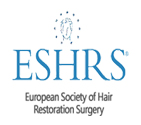- Mon-Sat | 8:00-18:00 Sunday (closed)
- Email : info@harleybodyclinic.co.uk
- Call : 02071679386
Won’t it be nice to regain density of thinning hair and seize baldness, without any surgery? Platelet Rich Plasma Therapy for hair loss management is substantial non-surgical procedure to possibly regain density of thinning hair and seize baldness in course of time.
The therapy works by injecting autologous blood plasma platelets into the scalp of the patient that stimulates stem cells, and visibly reduce hair loss caused by androgenic alopecia or any other non-androgenic alopecia.
Blood consists of plasma and platelets along with red and white blood cells.
Platelets or thrombocytes are fragments that carry coagulation factors that function in stopping bleeding in blood vessel injuries by clotting the blood in the mouth of the wound. Platelets also have certain growth factors that function in healing of wounds.
Blood plasma is the pale yellow colored part of the blood, functioning as the intercellular matrix of blood cells, meaning that it holds the blood cells together and gives them structure. It carries essential antibodies against infections and diseases and help wound healing. Platelets found in the plasma are greater in quantity than in circulating blood, making the blood plasma richer in platelet derived growth factors (PDGF), vascular endothelial growth factors (VEGF) and many more.
Thus, concentrated platelet rich plasma cultured from the blood, works like a medicine to treat major cuts, burns, and inflammation, including inflammation of stem cells that result in hair loss.
PRP treatment well utilised in medical treatments, including, cardiovascular treatment, acute arthritis, dental surgeries, and major wound healing, including burns and skin grafting procedures.
Now the same is included in hair loss management as well, wherein the injection of platelet rich plasma or even the spraying of it stimulates stem cells in the dermal papillae, responsible for hair growth. The PRP injection procedure may also sometime help fight DHT inflammations and retains hair density against androgenic alopecia. It is also applicable for non-androgenic hair loss types like telogen effluvium, and shock loss after hair transplantation.
Ideal candidates are individuals in the initial stages of androgenic alopecia, profuse hair thinning, It is a very good option for diffuse hair loss common to women, which is not always ideal for hair transplantation for the uncertain donor reserve.
It is not a hair restoration procedure, meaning this cannot regain hair growth if baldness has already taken place. It does not stop or reverse hair loss, but works somewhat similar to the hair loss medications, just more powerful and less in side effects. It is not ideal for patients who have are under any blood thinning medication; have a medical history of any viral infection, or scarring hair loss due to any infection.
The procedure begins with a consultation wherein the patient’s hair loss is evaluated and judged of their candidacy. A medical history is required. If the candidate is right, the procedure can take place on the day of the consultation.
The procedure requires minor preparation, including that patients are asked to stop taking blood thinning drugs; anti-inflammatory drugs, aspirins and smoking prior and post the surgery, for at least a week. Smoking must be refrained for at least a month, before and after the surgery.
An amount of blood taken from the patient, and the blood is cultured by rotation in a centrifuge separates the pale yellow color solid plasma from the liquid blood. The plasma is introduced with collagen, bioactive proteins, and platelet activators and thus prepared as a serum.
The serum is injected directly onto scalp, through very thin needles, which nearly painless therapy, or very minor bearably painful. Anaesthetics are not used in this procedure, however the surgeon may use topical local anaesthetic if the patient requests for it.
The procedure spans as long as 2 hours, and requires a session of 8-9 sittings a year to achieve a feasible result. Patients largely see a difference in their hair density with the 3rd or 4th sitting itself. After a year the repetition of the procedure can be once a year, to maintain the results, since it does not stop hair loss.
The patients can walk out of the clinic as soon as the procedure is over, since this does not involve any anaesthetic. And there are no downtime or recovery period associated. The results may vary person to person, but are moderately predictable.


